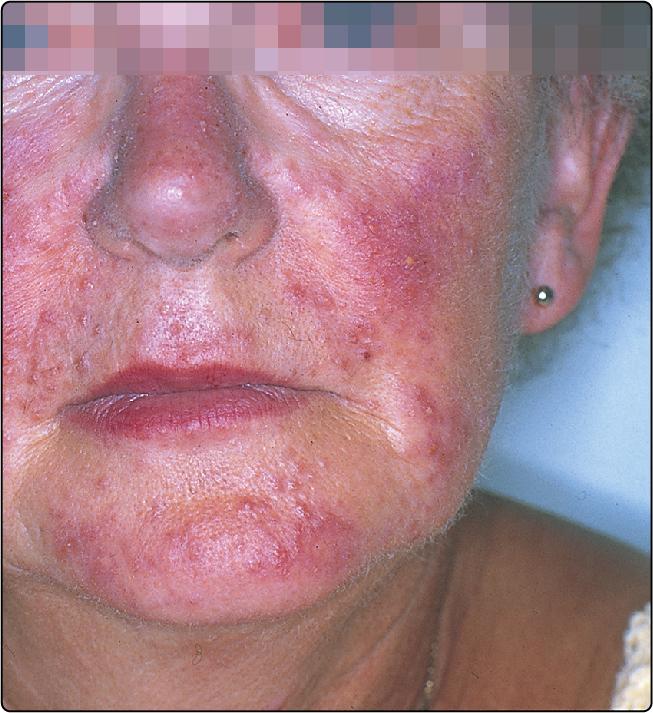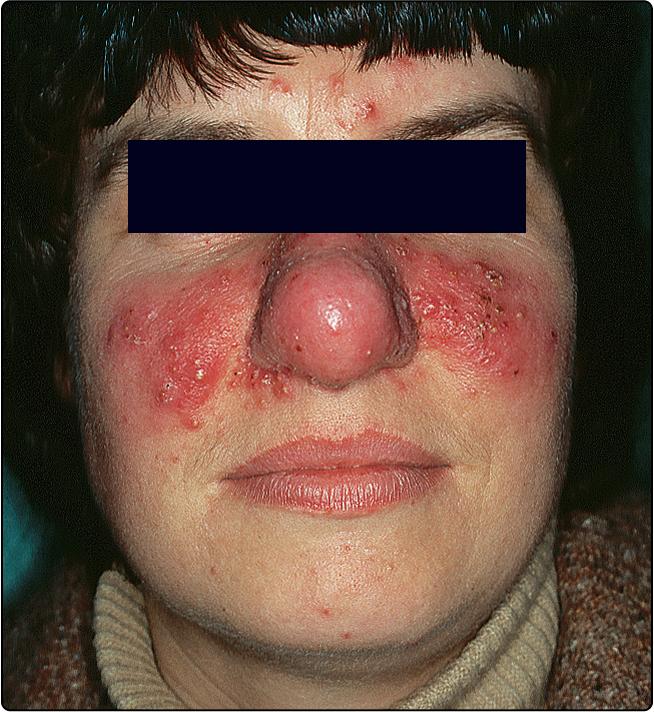Physical Address
304 North Cardinal St.
Dorchester Center, MA 02124
Rosacea is a chronic inflammatory facial dermatosis characterized by erythema and pustules, often associated with flushing. The cause of rosacea is unknown. Histologically, dilated dermal blood vessels, sebaceous gland hyperplasia and an inflammatory cell infiltrate are seen. Sebum excretion is normal.
The cause of rosacea is still unknown although it is recognized that dysregulation of the innate immune system, overgrowth of commensal organisms ( Demodex mites in hair follicles) and aberrant neurovascular signalling seem to be involved. Some researchers have proposed damage to dermal connective tissue by solar irradiation. Rosacea may be more common in those with a ‘celtic’ complexion, though it affects all skin types.
Rosacea is more frequent in women. Although commonest in middle age, it also affects young adults and the elderly. The earliest symptom is often flushing. Erythema, telangiectasia, papules, pustules ( Fig. 37.1 ) and, occasionally, lymphoedema involve the cheeks, nose, forehead and chin. Rosacea lacks the comedones of acne and occurs in an older age group.

Rosacea may progress through the phases of:
Flushing with mild telangiectasia, and on to
Papules and pustules with more sustained telangiectasia
Rhinophyma and induration as late stages ( Fig. 37.2 ).

Many cases though do not follow this sequence.
Sunlight and topical steroids exacerbate the condition, as can alcohol, hot drinks, vasodilatory drugs and spicy foods. Rosacea persists for years, but usually responds well to treatment.
Complications include rhinophyma, characterized by hyperplasia of the sebaceous glands and connective tissue of the nose, seen more often in men ( Fig. 37.2 ). Eye involvement by blepharitis, conjunctivitis and keratitis is quite common. Patients complain of grittiness in the eyes. Lymphoedema of the upper face, notably the lower eyelids, is sometimes encountered.
Differential diagnoses include contact dermatitis, photosensitive eruptions, seborrhoeic dermatitis and lupus erythematosus. These often involve the face but are either more acute, or scaly, or lack pustules. Perioral dermatitis (see later) is considered to be a variant of rosacea.
Become a Clinical Tree membership for Full access and enjoy Unlimited articles
If you are a member. Log in here